A glowing stretch off Australia baffles observers.
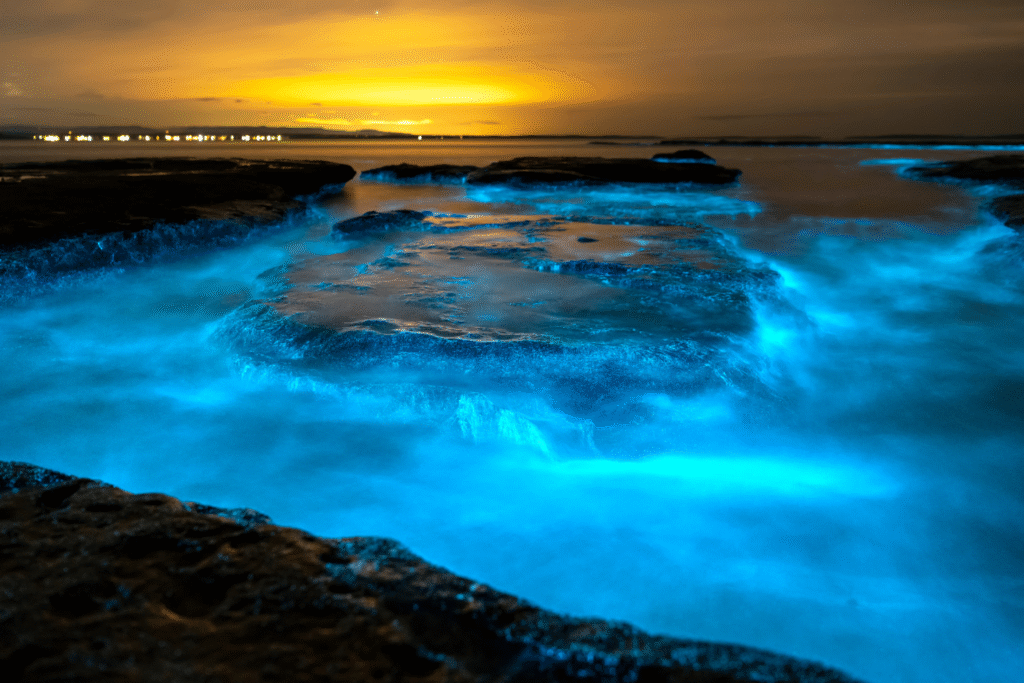
A recent satellite survey recorded a luminous turquoise glow stretching roughly 500 miles along the southern Australian coast. The anomaly showed up clearly in multi-spectral imagery from NASA’s ocean color instruments, sparking speculation about its cause. Initial analysis suggests it is a massive bioluminescent phytoplankton bloom rather than artificial light or volcanic activity. The glow appears tied to unusually high concentrations of chlorophyll-a in the water column, hinting at a bloom of marine microorganisms lighting up the seas.
1. The anomaly spans approximately five hundred miles.

Satellite imagery revealed a glowing band several hundred kilometers in length, visible off Australia’s southern shoreline. Sensors showed its width varying locally but averaging about two to five tens of miles. This scale is far larger than typical plankton blooms, demanding explanations beyond a localized event. The continuous stretch of illumination suggests a coherent oceanographic trigger rather than random patches.
It isn’t a few glowing spots but a vast coastal cloak of light. The extent means that whatever mechanism drives the glow must operate over broad water masses and possibly linked to nutrient influx, currents, or upwelling zones.
2. The glow originates near southern Australia’s coast.

Mapping places the anomaly largely over the Great Australian Bight and adjacent shelf waters. That region has seen prior blooms and upwelling events, making it a plausible locus for such a phenomenon. Local geography, seabed contours, and current patterns likely concentrate nutrients, aiding bloom formation. The location implies that both coastal and shelf processes might feed the event, according to NASA and marine observational notes.
Because it hugs continental shelf depths rather than open ocean or shore edges, the glow doesn’t align with city lights or human emissions. It suggests a natural marine cause tied to biology or chemistry in coastal waters.
3. High chlorophyll levels point to phytoplankton bloom.
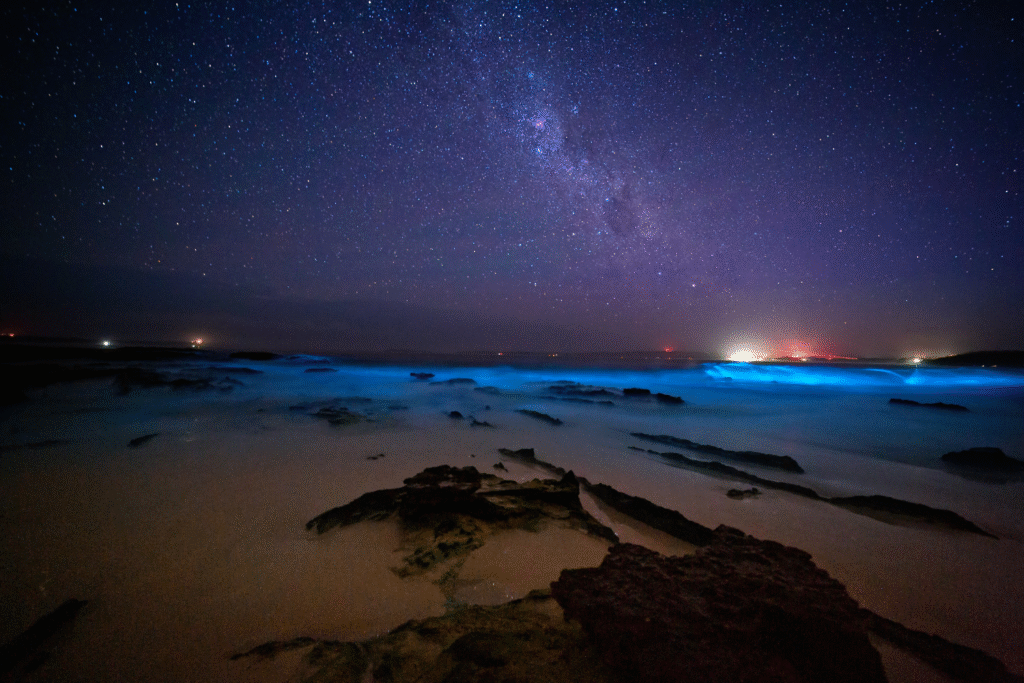
Satellite ocean color sensors recorded elevated chlorophyll-a concentrations in the glow zone, consistent with a dense phytoplankton population. This pigment, used by photosynthetic microbes, is often a proxy for biomass. According to reports interpreting NASA data, the glow corresponds closely with bloom hotspots. The match strengthens the hypothesis that the luminous display is biological in origin rather than geological or manmade.
Dense phytoplankton, especially certain species with bioluminescent or fluorescent capabilities, can produce visible glows when excited by sunlight or mechanical agitation of water. That fits the spatial patterns seen in satellite frames.
4. Bioluminescent organisms likely cause the fluorescence.
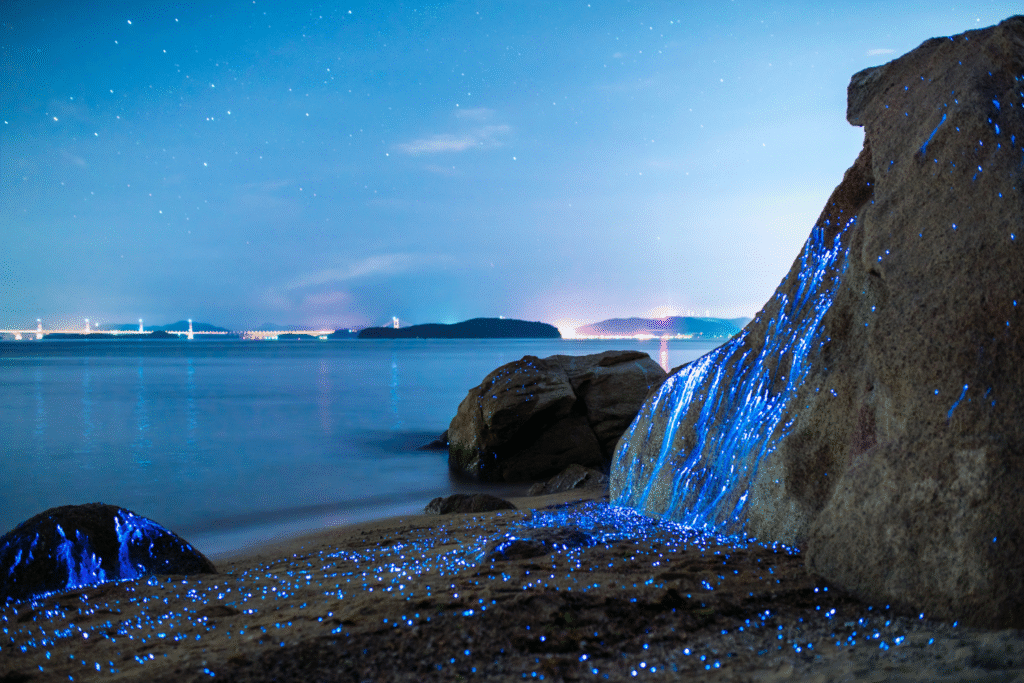
Many marine microbes emit faint light when disturbed or during metabolic processes. In this case, the high biomass plus ideal water conditions might trigger collective luminescence or fluorescence. The anomaly’s glow suggests that the organisms involved either fluoresce under sunlight or bioluminesce under agitation.
During evening hours, the glow’s contrast strengthens, suggesting that internal light generation may play a role. Whether all the light stems from fluorescence or includes active bioluminescence remains under investigation.
5. Nutrient upwelling may have fueled the bloom.
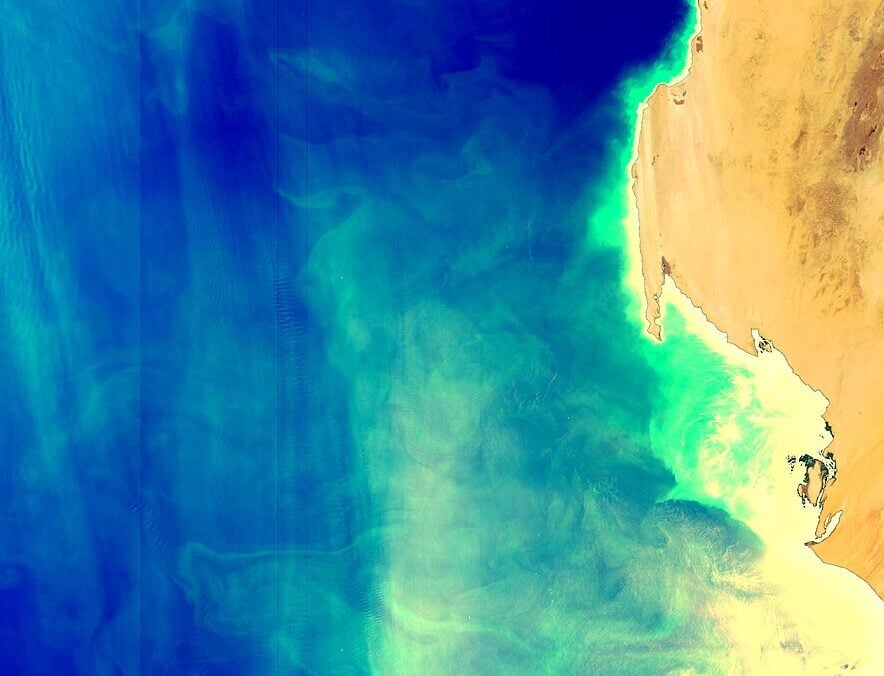
Oceanographic conditions along that coastline often foster upwelling—cold, nutrient-rich water rising from depth into the sunlit zone. That influx feeds phytoplankton growth rapidly. In this instance, upwelling likely supplied nitrogen, phosphorus, or iron, triggering explosive microbe multiplication and spreading the bloom seaward.
Once nutrients arrive, populations can boom rapidly under sunlight. If currents carry the bloom laterally, the glow can extend far along the coast, consistent with the observed 500-mile stretch.
6. The event is likely temporary and seasonal.
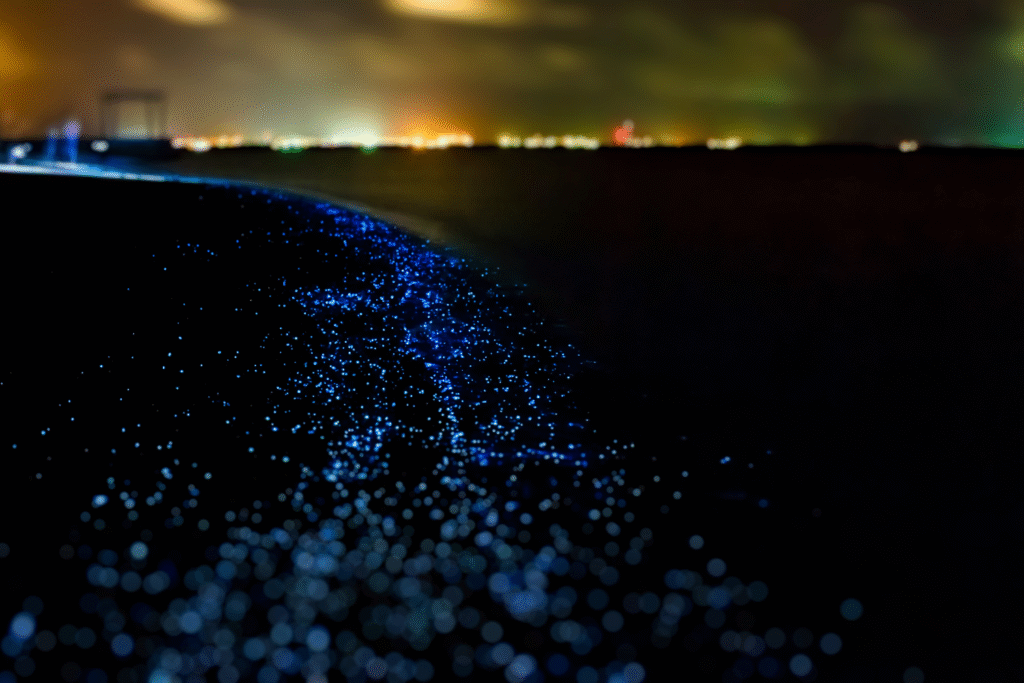
Blooms of this scale do not persist indefinitely without collapse. As nutrients are consumed, light penetrates less, and predation or ecological stress increases, the glow will fade. Seasonal cycles, temperature shifts, and mixing will eventually break it down.
Historical satellite records from the region show recurring but shorter blooms. Those patterns hint that this event is part of a natural rhythm, albeit amplified under favorable conditions.
7. Similar phenomena have been recorded in the region.

In past years, NASA satellites and marine observatories have captured less intense glows or high-biomass blooms off southern Australia. Those prior events sometimes preceded major upwelling or current shifts. This new anomaly is likely a stronger version of such historical patterns.
By comparing new frames to archival imagery, scientists aim to track how often such large blooms occur and under what conditions. That comparative approach helps rule out rare anomalies and focus on systemic processes.
8. It is unlikely to be anthropogenic light pollution.
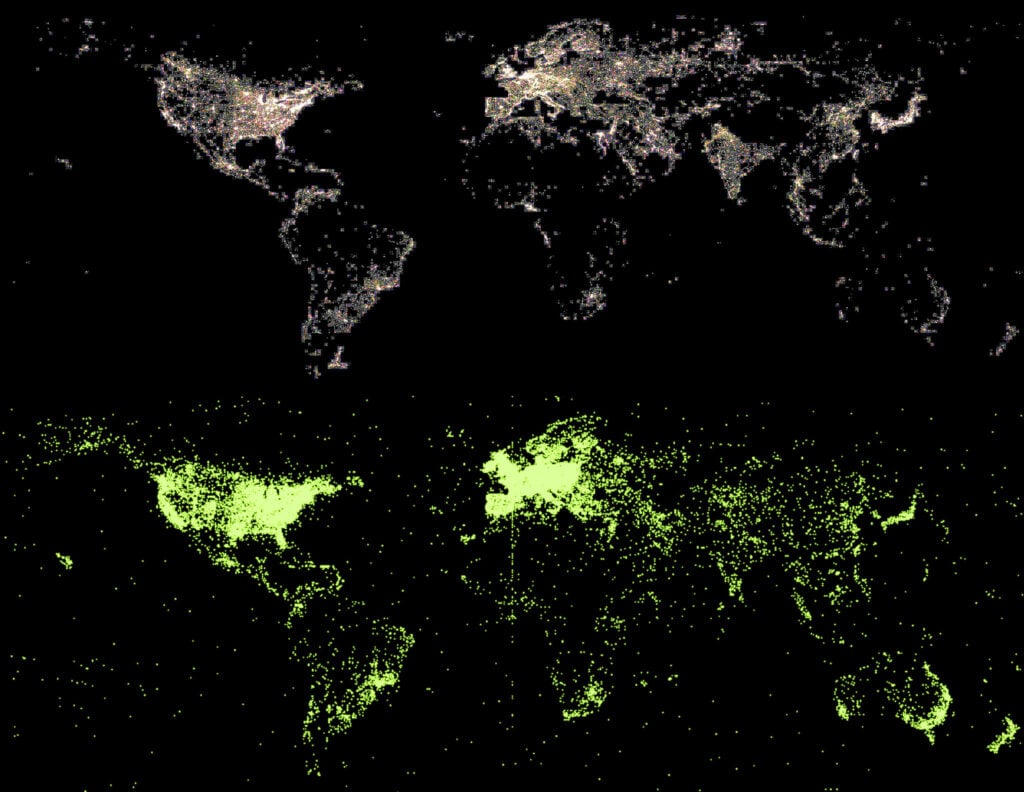
Big coastal lights, oil rigs, or city emissions cannot explain a continuous marine glow this far offshore and over a stretch of 500 miles. The spectral signature and continuity align with biological fluorescence rather than artificial lighting. Also, the area includes vast open sea with minimal human infrastructure.
Analyses of the light’s wavelength components show peaks in bands typical of chlorophyll fluorescence, not visible lamp spectra. That evidence strongly favors a marine origin over human sources.
9. The anomaly may influence marine ecology locally.
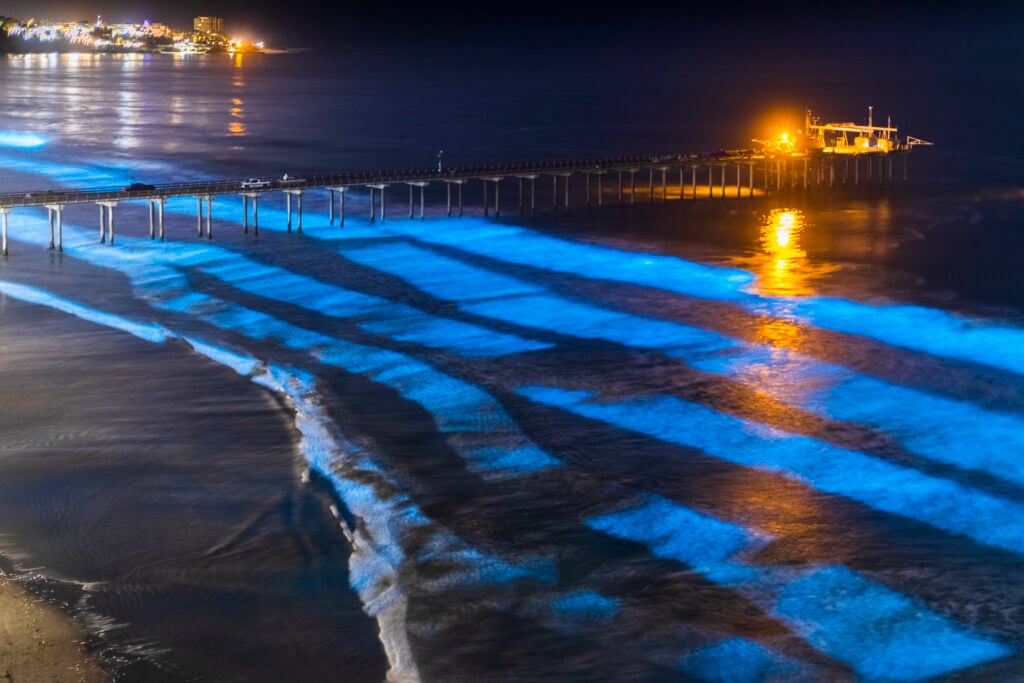
A bloom of this magnitude can alter oxygen levels, light penetration, and food web dynamics. Organisms from microbes to fish may respond—some benefiting from the bounty, others suffering from low oxygen zones as decomposition sets in. The sudden increase in biomass could cascade through the ecosystem.
Fisheries, plankton grazers, and water chemistry may all shift temporarily. Observers will now monitor whether fish schools, whales, or other marine life converge on the glow zone, and whether post-bloom die-off events follow.
